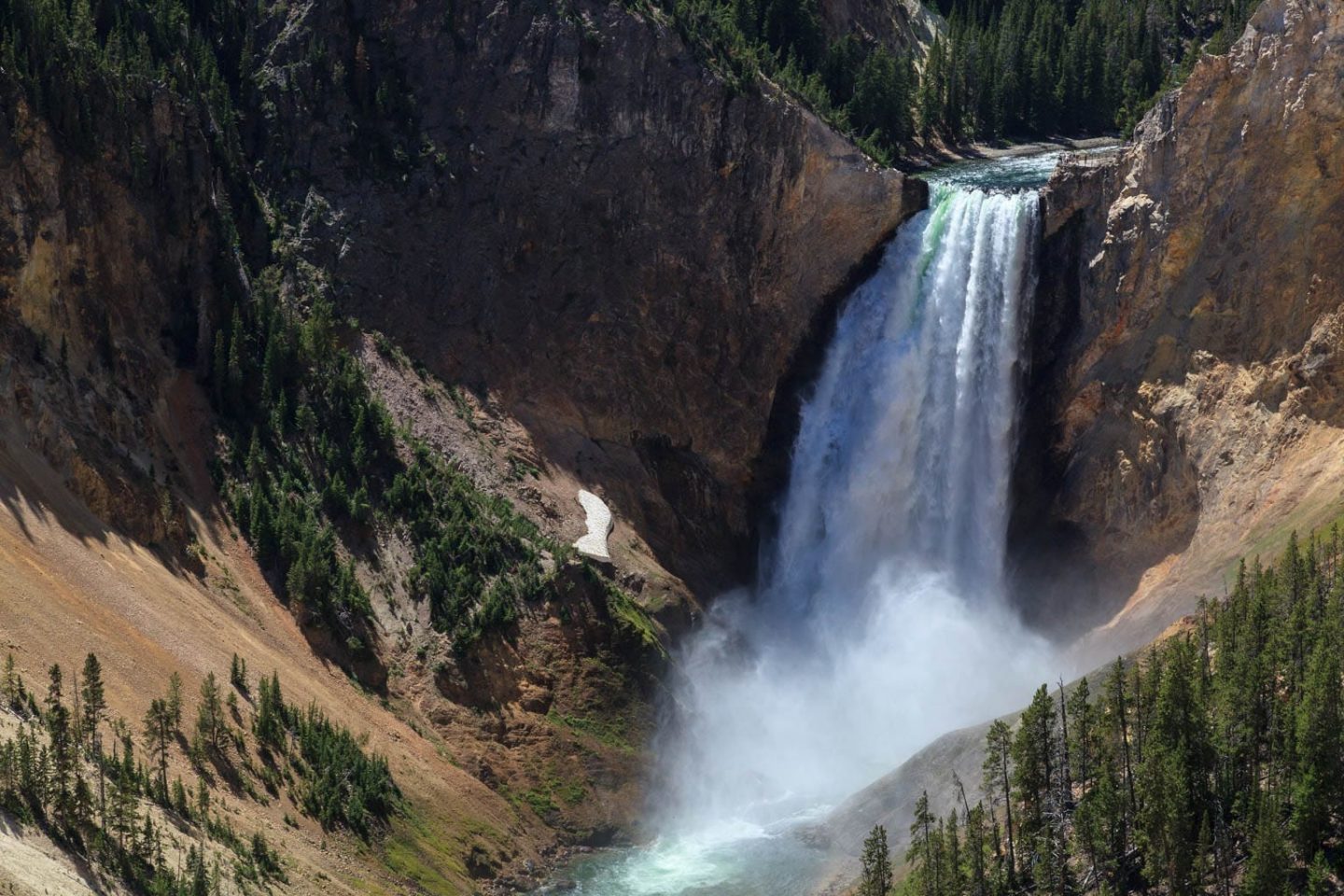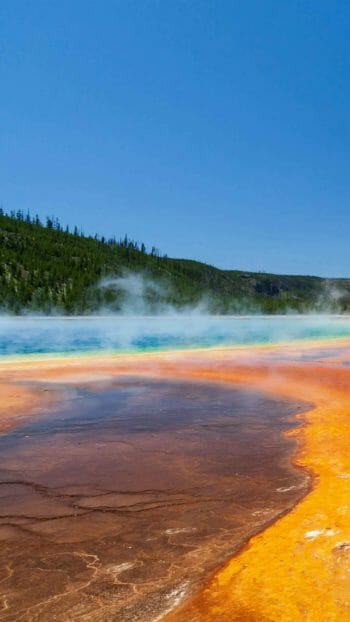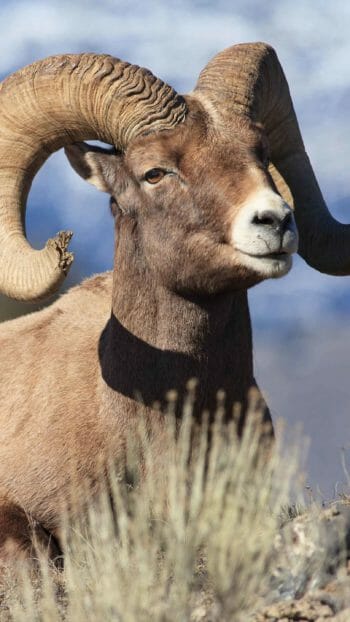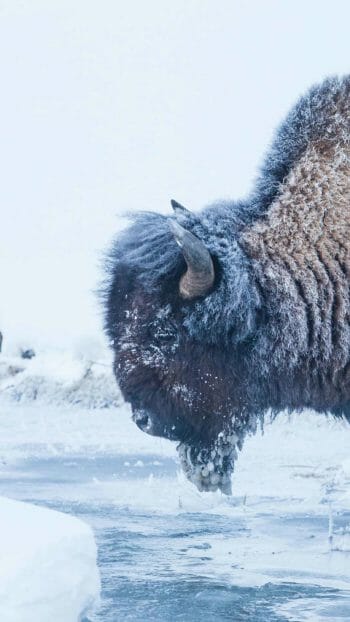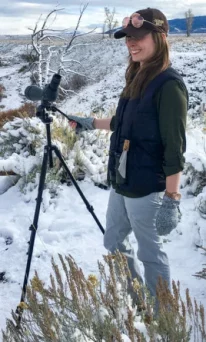Yellowstone National Park is a land of extremes where majestic landscapes, geothermal wonders, and an abundance of wildlife converge. Known for its vast, pristine wilderness, Yellowstone is home to some of the most stunning waterfalls in the United States. From thundering cascades to serene, hidden gems, the waterfalls of Yellowstone offer a spectacle of nature that captivates visitors year-round. Whether you’re a nature enthusiast, a photographer, or simply someone who loves a good adventure, Yellowstone’s waterfalls should be at the top of your must-see list.
A Brief History of Yellowstone National Park
Yellowstone National Park was established in 1872, making it the first national park in the world. It was created first to protect the area’s unique geothermal features, such as geysers, hot springs, and fumaroles, and later became a way to preserve native wildlife and natural beauty for future generations. Over 2.2 million acres of wilderness are protected under the park’s designation, home to diverse ecosystems ranging from geothermal valleys to lush forests. The park sits atop a massive volcanic hotspot, and much of its landscape is shaped by past volcanic activity, including the stunning waterfalls that cascade through its canyons.
Geographical Locations and Landscape Features
Yellowstone is a vast and diverse landscape, with a range of geographical features that contribute to its awe-inspiring waterfalls. The park is divided into several regions, each offering a different perspective of its natural wonders. The geothermal areas are located primarily in the park’s central region, while the surrounding valleys, forests, and mountains provide the perfect backdrop for the park’s falls.
Many waterfalls are found along the Yellowstone River, which flows through the park’s iconic Grand Canyon of Yellowstone. The canyon’s steep cliffs, sculpted over thousands of years by volcanic activity and erosion, create an environment perfect for waterfalls. The river passes through geyser basins and thermal areas, making for a one-of-a-kind watercourse that contributes to the park’s geological significance. Other significant rivers in the park like the Madison River, the Gibbon River, and the Firehole River contribute to the impressive lineup of waterfalls to visit.

Famous Waterfalls of Yellowstone
Yellowstone’s waterfalls are renowned for their beauty and power. The park boasts over a dozen notable waterfalls, but a few stand out as iconic.
Lower Falls of the Yellowstone River
The Lower Falls is perhaps the most famous waterfall in the park. At 308 feet, it’s one of the tallest waterfalls in North America and can be found in the Grand Canyon of the Yellowstone. The dramatic drop and the surrounding canyon walls provide one of the most photographed landscapes in the world. Visitors can enjoy spectacular views of the falls from several vantage points along the canyon, including Artist Point, which offers a perfect view of the falls framed by the canyon’s colorful rock formations.
Upper Falls of the Yellowstone River
Just above the Lower Falls, the Upper Falls is a 109-foot waterfall that is equally impressive in its own right. The Upper Falls can be accessed via a short, easy trail from the canyon rim, offering a different perspective of the Yellowstone River’s power. While it may not be as tall as the Lower Falls, its sheer volume and force are awe-inspiring.
Gibbon Falls
Located along the Grand Loop Road, Gibbon Falls is a beautiful, often overlooked waterfall that features a delicate cascade of water falling over a rock ledge. It’s a more tranquil spot compared to the massive Lower and Upper Falls but still provides a stunning view and a peaceful atmosphere.
Tower Fall
Tower Fall, located in the northern part of the park, is another of Yellowstone’s signature waterfalls. The 132-foot cascade is part of Tower Creek, and its distinctive formation and location near the Tower-Roosevelt area make it a must-see.
Best Vantage Points to View the Waterfalls
To truly experience the awe of Yellowstone’s waterfalls, you’ll want to seek out the best vantage points for viewing and photography. These include:
Artist Point
Known for offering the most iconic view of the Lower Falls, Artist Point is a must-see for anyone visiting Yellowstone. The view from the overlook is framed by the steep, colorful canyon walls and the dramatic drop of the waterfall.
Lookout Point
A short hike from the Grand Canyon of Yellowstone, Lookout Point provides a stunning view of the Upper Falls. From here, you can get an up-close look at the waterfall, with the surrounding canyon walls adding to the grandeur of the view.
Brink of Upper Falls
This brief and easy walk takes you down a stone staircase to reveal a viewing platform perched right at the top of the Upper Falls. Feel the power of the roaring water race over the edge and watch it crash back down into the river. This stop is sure to give you a thrill!
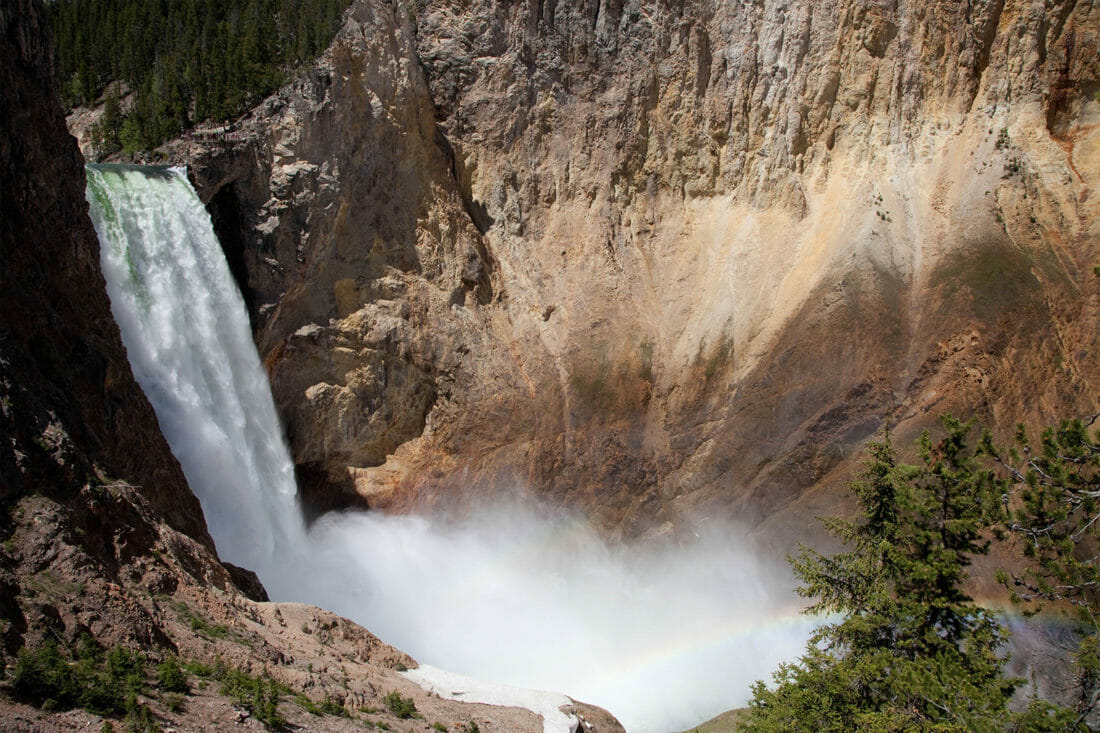
In Popular Culture
Yellowstone’s waterfalls have not only captured the attention of photographers and outdoor enthusiasts but have also been featured prominently in art and popular culture. The park’s majestic landscapes, particularly the falls, have been depicted in paintings, illustrations, and photographs since the 19th century. Artists like Thomas Moran helped bring Yellowstone to the world’s attention during the early days of the park’s existence, contributing to its status as an American icon.
The awe-inspiring beauty of the waterfalls also made their way into films, documentaries, and TV shows, helping to cement Yellowstone’s place in American cultural history.
Native American History and Relevance
Long before Yellowstone was established as a national park, the area was home to several Native American tribes, including the Shoshone, Crow, Nez Perce, and Lakota. These tribes considered the land sacred and rich in resources, and many of them used the area for hunting and spiritual ceremonies. The waterfalls of Yellowstone hold significance in the traditional beliefs and stories passed down through generations of Native American communities.
Many Native American groups considered the land, with its hot springs, geysers, and waterfalls, to be a powerful and spiritual place. These natural wonders were often woven into their myths and legends, with the waterfalls symbolizing power, renewal, and connection to the earth.
Best Tour to See the Waterfalls
Yellowstone’s waterfalls can be explored in a variety of ways, depending on the season, your interests, and what route you take.
Best of Yellowstone Tour
During the summer months, our guided “Best of Yellowstone” tour is one of the best ways to see the park’s iconic waterfalls. This tour typically covers the most famous locations, including the Grand Canyon of the Yellowstone, Lower Falls, Upper Falls, and Tower Fall. Knowledgeable guides provide insights into the park’s history, geology, and wildlife, making for an unforgettable experience.
Yellowstone Wildlife Tour
If you are looking to take a wildlife safari, there are still opportunities to see waterfalls along the way! Our wildlife tours usually travel to Lamar Valley which is a hotspot for highly sought after species, located in the northeast region of the park. Along this route, you may visit smaller, yet impressive Undine Falls, and have the option to visit Tower Falls further south. Some wildlife tours visit other areas of the park depending on your itinerary, so this could be flexible.
Winter Tours
Waterfalls are still there in the winter months! Our multi-day tours in the winter offer an opportunity to take a snowcoach tour which allows us to visit the Grand Canyon of Yellowstone. This way, you can witness these spectacular waterfalls in their frozen form. Water still flows, framed by the snowy, icy landscape.
Best Access Points: Bozeman, Gardiner & West Entrance
The most convenient access points to Yellowstone’s waterfalls are the town of Gardiner by the North Entrance and West Yellowstone by the West Entrance- both accessible from the town of Bozeman, Montana. Bozeman is just about 90 minutes away from the park, making it an ideal gateway for visitors arriving by air. The West Entrance is one of Yellowstone’s busiest and most accessible points, providing a direct route into the park and easy access to the geothermal areas and valleys that house the waterfalls.
Final Thoughts
Yellowstone’s waterfalls are a testament to the power and beauty of nature. From the towering Lower Falls to the serene cascades of Gibbon Falls, each waterfall offers a unique and awe-inspiring experience. With its rich history, stunning views, and cultural significance, Yellowstone remains one of the most remarkable places on Earth to explore and appreciate. Make sure to add the park’s waterfalls to your bucket list — they won’t disappoint.

